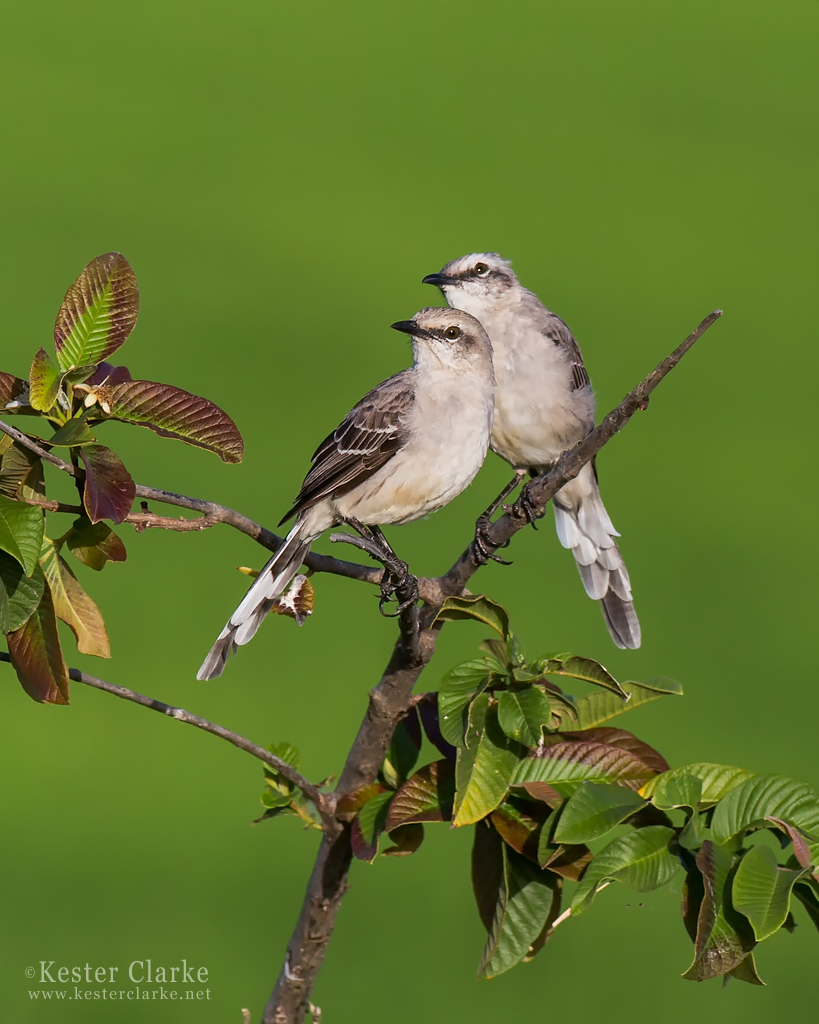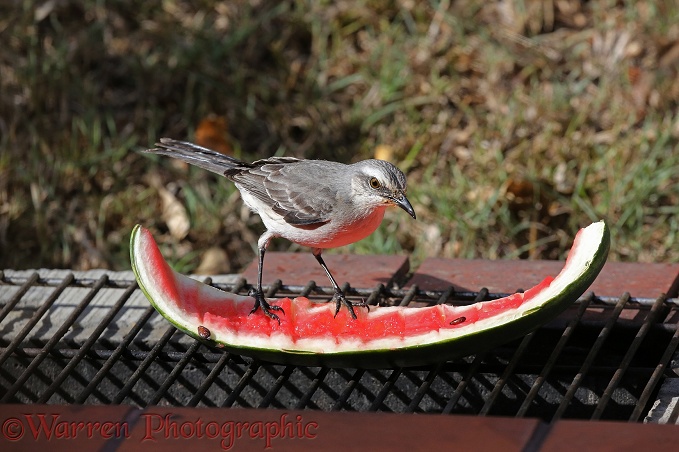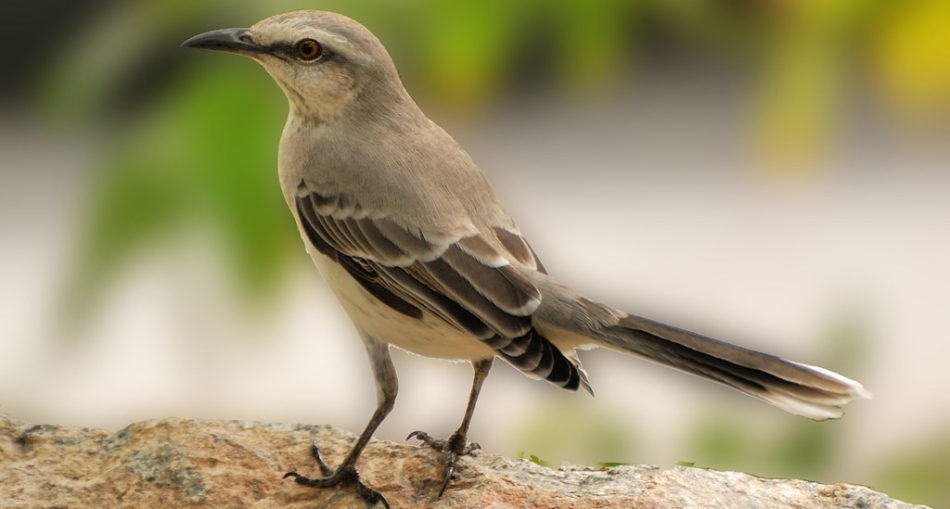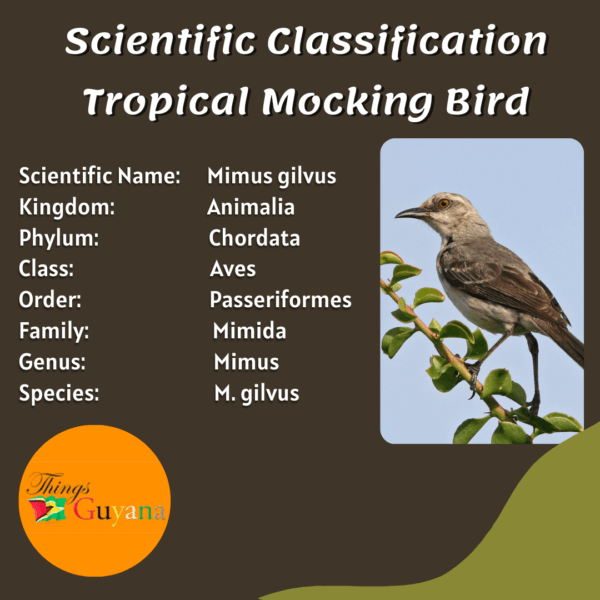This small bird may seem a bit bland in comparison to their Northern counterpart, but their pale grey shades and black stripes are striking, but the most unique and notable feature that would have awarded them with its name would be the fact that it can “mock” or mimic sounds that they hear. The reason for them mimicking sounds (not just other birds) is one that is quite interesting and will be revealed when you continue to read.
Description

Supercilium of a bird. Photo Source: https://www.birdsoutsidemywindow.org/2010/08/27/anatomy-supercilium/
The upper parts are typically pale-gray with contrasting blackish wings and tail. Some are more medium-gray or brownish overall. Adult tropical mockingbirds grow from 9 to 10 inches long and their weight tends to vary from species. Adults of the nominate subspecies are gray on the head and upper parts and have a whitish supercilium and a dark stripe through the eye. The wings are blackish with two white wing bars and off-white borders to the flight feathers. The underparts are off-white. They have long dark legs, a narrow black bill with a slight downward slope, and a long dark tail with white feather ends. Juveniles have dimmer streaks on their breast and flanks and are browner overall.

Pair of Tropical Mocking Birds, Photo Source: https://www.kesterclarke.com/galleries/birds-of-guyana/mockingbirds/tropical-mockingbird/
Distribution
The tropical mockingbird is widespread across the Caribbean and other southern countries. The Lesser Antilles from Antigua to Grenada, Trinidad, and Tobago; the ABC Islands; a number of Venezuelan islands, including La Orchila, Tortuga, La Blanquilla, Los Testigos, and Margarita; has also occasionally happened on Barbuda and Barbados (where previously introduced but no longer resident). From the Caribbean coast in the south through central Ecuador, the Llanos of Colombia and Venezuela, the savannas of Roraima, and east to French Guiana are all regions in South America. The coastal region of eastern Brazil, from Pará to Rio de Janeiro, is also included.
The tropical mockingbird is common in most open habitats, including around human habitation. Tropical mockingbirds tend to avoid closed forests and mangroves.
Taxonomy

Photo of Johann Georg Wagler, German herpetologist. Photo Source: https://en.wikipedia.org/wiki/Johann_Georg_Wagler
The tropical mockingbird was first described by Linnaeus in his 1758 work Systema Naturae. He classified it as Turdus gilvus. The binomial name Turdus gilvus has been used for this bird since Linnaeus’s time. The current scientific name Mimus gilvus was proposed by German naturalist Johann Georg Wagler in 1829.
Feeding
The tropical mockingbird hunts for food on the ground or in close proximity to vegetation. It also catches flying insects like swarming termites. It is omnivorous and consumes a wide range of arthropods, including spiders, grasshoppers, and beetles, seeds, berries, small fruits, mangoes, lizards, bird and lizard eggs, bird feeder contents, and human food.

Tropical Mockingbird eating watermelon. Photo Source: https://www.warrenphotographic.co.uk/39822-tropical-mockingbird-feeding-on-water-melon
Reproduction
The tropical mockingbird typically lays its eggs from the end of the wet season to the beginning of the wet season. It frequently bears three broods throughout that protracted period. Although cooperative breeding with the offspring of the previous brood functioning as helpers has been observed, it is monogamous. It vigorously protects its territory from predatory creatures as well as birds of its own species and other species. The nest is constructed by both sexes and is positioned low in a tree or shrub using coarse twigs lined with softer material. The average clutch size is three, however, it can range from two to four. Throughout the 13 to 15-day period, the female is primarily responsible for incubation. For up to 19 days and after fledging, both parents (and helpers) feed the chicks in the nest.
Tropical Mockingbird Eggs. Photo Source: https://commons.wikimedia.org/wiki/File:Mimus_polyglottos_eggs_06.JPG
Fun Fact: Fledging is when a small bird has grown large enough wings to be able to take flight.
Communication
A variety of gentle to harsh notes, trills, and significant phrase repetition make up the song of the tropical mockingbird. It frequently sings all night long. It seems to imitate other species only infrequently. Its calls include “a harsh “chick” or “chek,” as well as a resonant “pree-ew.”
Watch this video to hear the calling of a Tropical Mockingbird:
https://www.youtube.com/watch?v=HP63fuf_yJI
Why Do Mockingbirds Mock?
Mockingbirds are known to not only mimic the sound of other birds but also that of other animals as well such as some species of frogs the reason for this, some scientists believe, is that it is a way to ensure that their territory is protected. These birds are small, making them vulnerable to predators when they are in their habitat, even if they are few in number, they would mimic other sounds to seem larger in number and thus scare off any predator that may want to threaten them. Male mockingbirds would use this ability to gain the trust and attention of female mockingbirds during mating season.
Fun Facts:
- Mockingbirds are most known for their ability to mimic and recreate sounds they hear from other birds. Male mockingbirds are capable of learning up to 200 different sounds throughout their life.
- Male mockingbirds are most known for singing all day and night. Females, however, do not sing nearly as much as males. The only time you may hear a female mockingbird sing is during the fall when she is establishing her territory for the winter.
- Mockingbirds like to mimic sounds from other birds, but they can also pick up other sounds as well. They can create sounds they hear from human activity, such as construction and other animal noises including dogs barking.
- Mockingbirds are very territorial and will become aggressive if other birds or animals approach their area. Aggression is especially apparent during nesting season, as both parents will defend their nesting area and hatchlings from other birds. Females will attack other female birds, while males attack male birds that enter the area.
- Mockingbirds are monogamous and generally select only one partner to mate with for life. Male mockingbirds may mate with a few other females within their lifetime, but this is a rare occurrence.
- Mockingbirds are diurnal, meaning they are most active during the day. This is when they build nests, tend to young, and forage for food. However, male mockingbirds are known to disrupt the sleep schedules of nearby residents by singing all throughout the night.
References:
- https://en.wikipedia.org/wiki/Tropical_mockingbird
- https://birdfinding.info/tropical-mockingbird/
- https://birdfeederhub.com/facts-about-mockingbirds/#:~:text=Mockingbirds%20are%20most%20known%20for,different%20sounds%20throughout%20their%20life.
- https://blogdigger.com/tropical-mockingbird/








